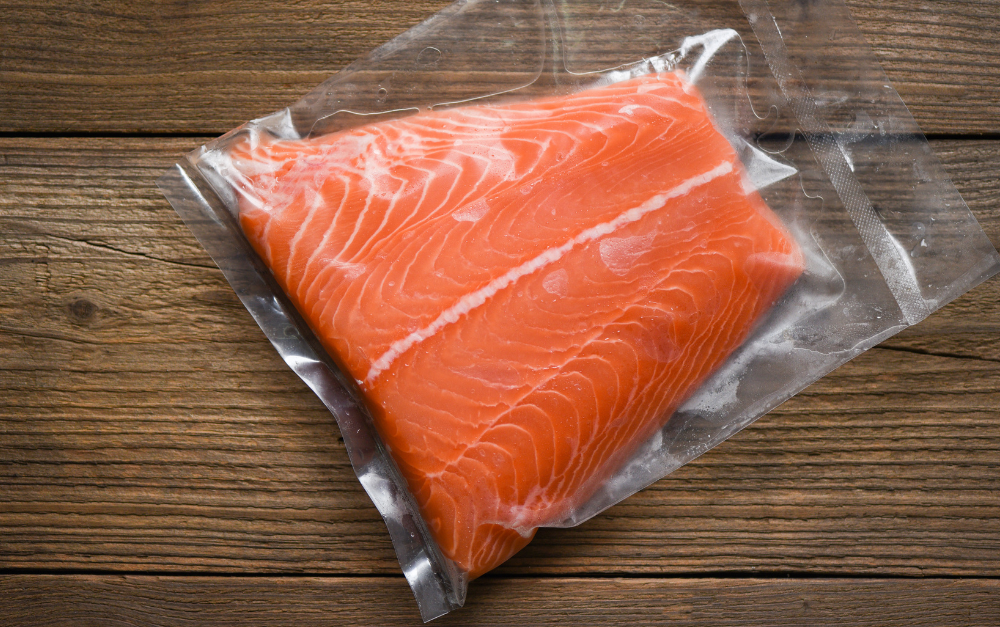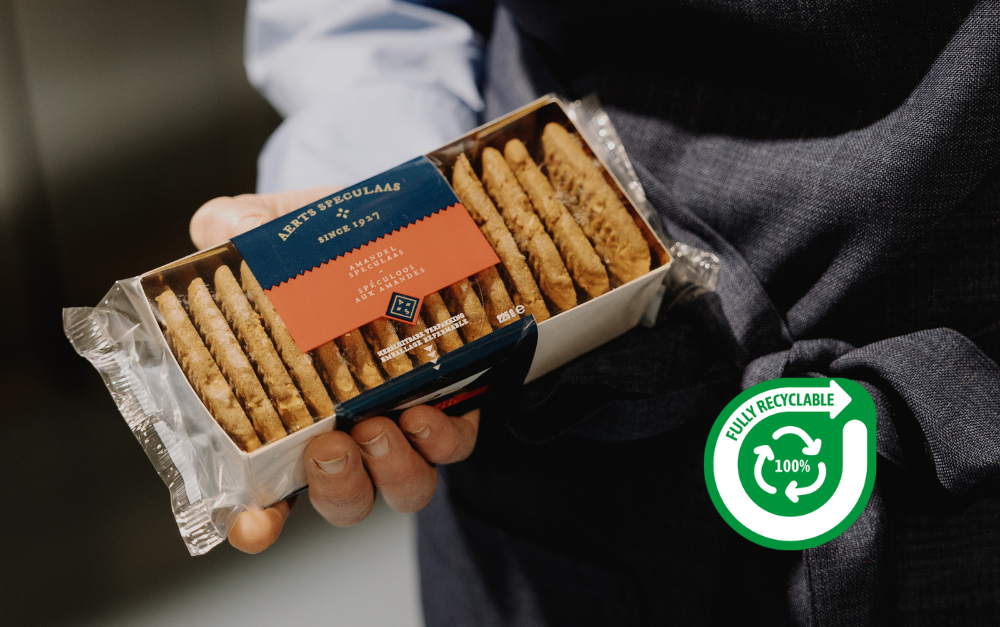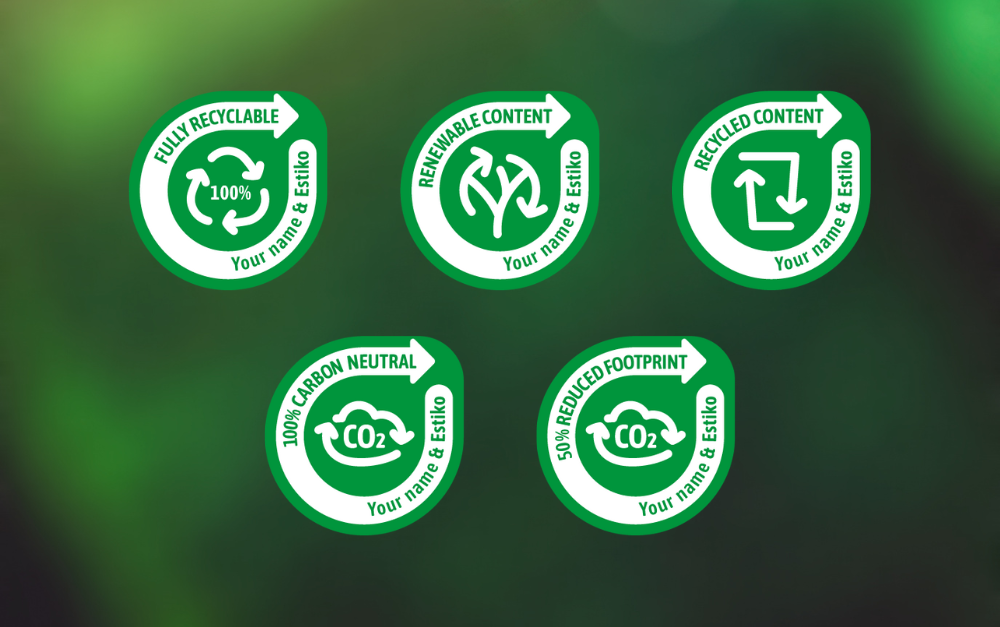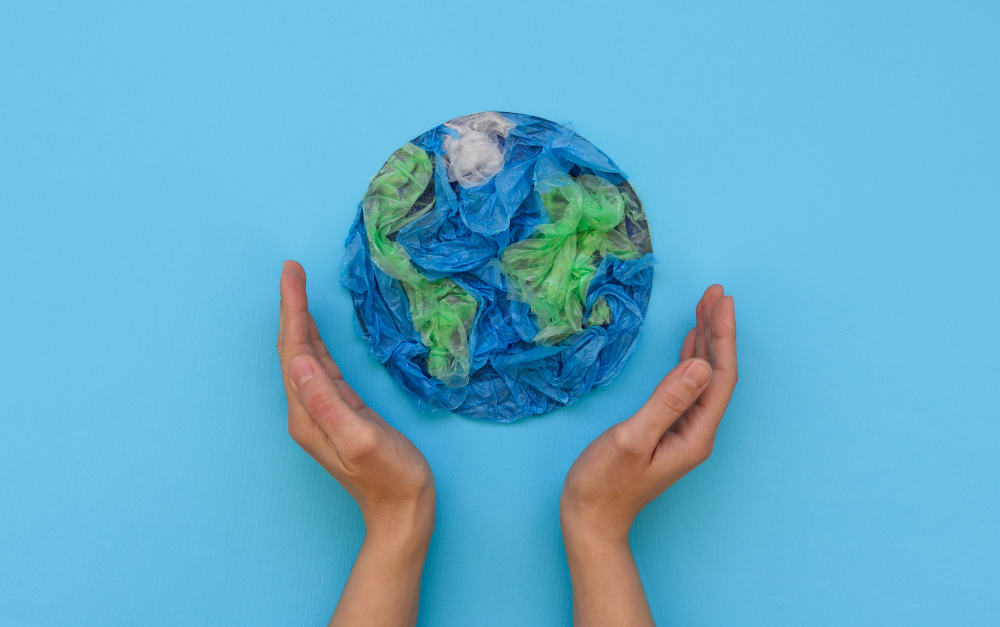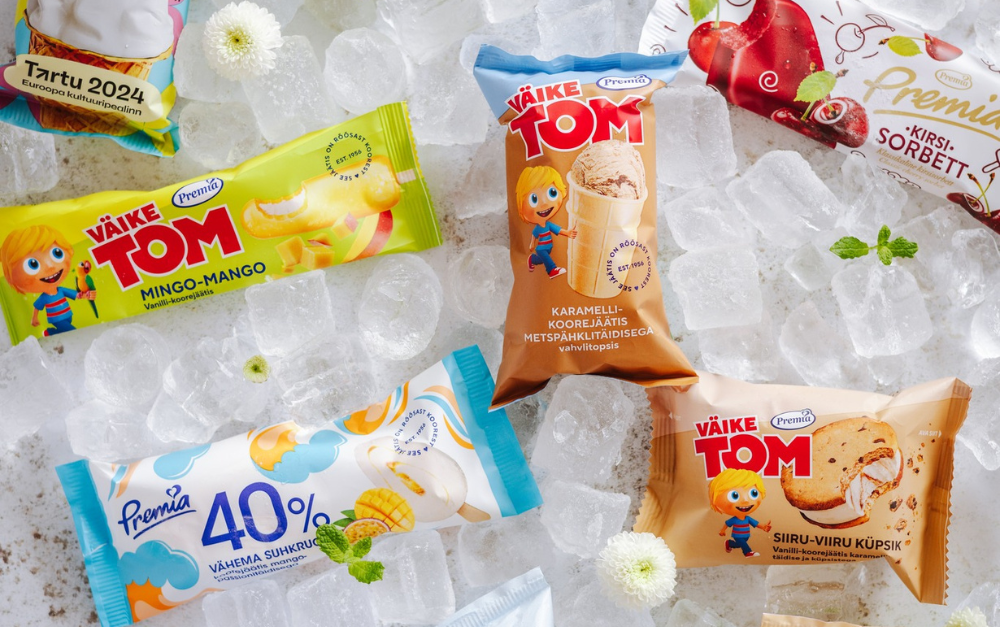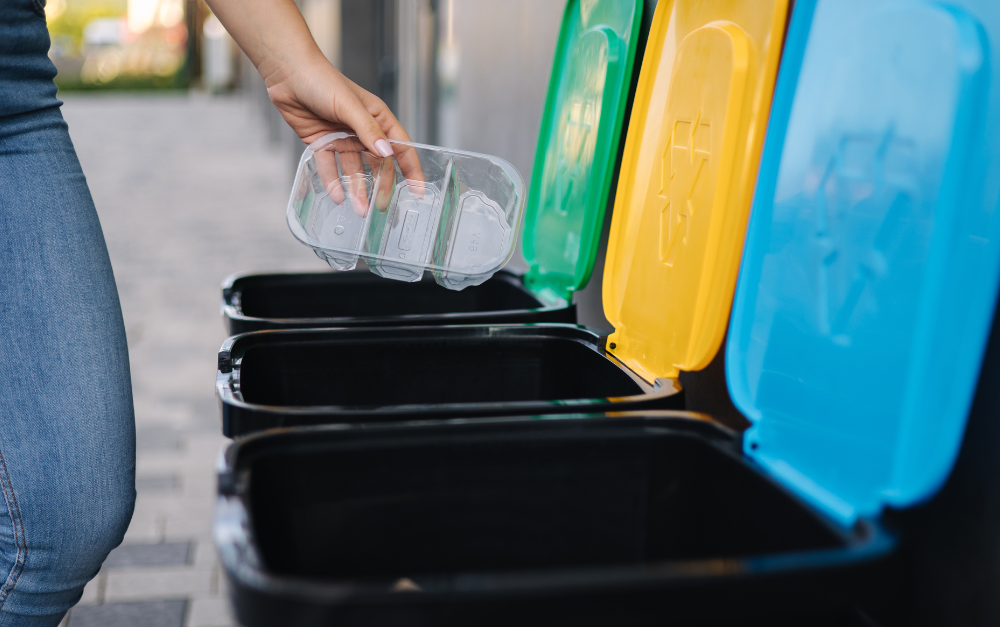Recently, the flexible packaging supplier Estiko had an opportunity to visit this groundbreaking facility, bringing along its Swedish partners to explore the site firsthand. The visit provided a valuable perspective on the cutting-edge technologies used and a deeper understanding of the options available for recycling plastic packaging. In this article, we will share the insights from our visit, offering guidance for producers who are also looking to switch to more sustainable solutions.
Challenges in recycling plastic packaging
One of the most significant hurdles in recycling plastic packaging lies in the composition of packaging. For many items, especially food products, the packaging is crafted from a combination of materials, such as plastic-coated paper or a mix of different plastics, making them difficult to separate during the recycling process. This complexity often results in lower recycling rates and higher processing costs.
Poor or lack of marking on packaging also create confusion and inefficiencies. Consumers often struggle to determine which materials are recyclable or how they should treat the leftover packaging, leading to improper disposal. This also lowers the rates of the post-consumer recycled (PCR) materials available on the market.
Swedish solutions to overcome challenges
The Swedish recycling plant Site Zero, located in Motala, is the largest and most technologically advanced plastic recycling plant in the world. Since its opening in 2018, the facility has been at the forefront of recycling innovation, enabling the responsible handling of 12 different types of plastics sourced from Scandinavian households. With a capacity of 200,000 tonnes per year, Site Zero stands out with advanced sorting technologies, such as infrared scanners and AI based automated sorting lines to accurately separate mixed waste into several fractions, including rigid and flexible PP, HDPE, LDPE and PET bottles, both transparent and coloured.
With an impressive efficiency up to 95%, the facility has been regarded as ‘a game changer’ by experts, facilitating a transition to circular economy. This high level of efficiency not only improves the overall recycling process but also reduces waste and conserves resources, setting a new standard for recycling practices globally. By 2025, the company also aims finalise the plastic washing and pelletisation process, enabling a complete circular plastic flow in Sweden.
Given the ambitious EU-wide targets, which include incorporating 10% recycled content in food and medical packaging and 35% in non-contact-sensitive packaging by 2030, it is evident that additional facilities would be needed to achieve the set objectives. However, Site Zero exemplifies how advanced recycling facilities can support legislative goals and drive industry-wide changes.
Designing for recycling
While the improved sorting facility will boost plastic recycling in Sweden, its success relies not only on technological advancements but also on consumers, manufacturers, and packaging suppliers. Effective collaboration between all parties is essential to maximise recycling rates and create a truly circular economy.
One possible solution for enhancing recyclability from producers’ perspective is simplifying packaging materials by opting for single-material packaging and reducing the film thickness, also known as downgauging, whenever possible. Designing for recycling makes it easier for recycling facilities to process the materials effectively while reducing the volume of waste that needs to be processed. Prioritising the switch towards mono materials is also in line with upcoming EU packaging requirements.
Using a less-is-more approach in terms of printing is also a great way to increase yields. By limiting the print on packaging and reducing the number of inks used, the quality of recycled materials is enhanced. For optimal results, it is best to opt for transparent or white materials, as they are easily detectable under NIR technology.
Furthermore, implementing clear and consistent recycling labels on packaging can guide consumers in proper disposal methods. Incorporating clear instructions and symbols on packaging can significantly reduce confusion in the recycling stream, resulting in proper sorting and greater consumer convenience. Right marking also creates a perfect opportunity to raise awareness of your own sustainable approach.
Related article: Estiko’s sustainability logos for different packaging types
Sweden’s largest sorting plant is a great example of how innovative solutions can address the challenges of recycling. By leveraging advanced technologies, the plant sets a benchmark for global recycling practices. However, the widespread change cannot be accomplished in isolation. The path to sustainability lies in collaboration between producers, suppliers, consumers and policymakers. By collaborating and designing for recycling, we can together transform challenges into positive change and drive a truly circular economy.
Estiko’s portfolio of sustainable packaging solutions is designed to meet the evolving needs of conscious consumers. Designed with sustainability in mind, our diverse range is carefully crafted to fit the specific needs of your products without any compromises on safety and quality.
Learn more about Estiko’s solutions and contact our packaging experts to find a suitable sustainable solution to your products.
